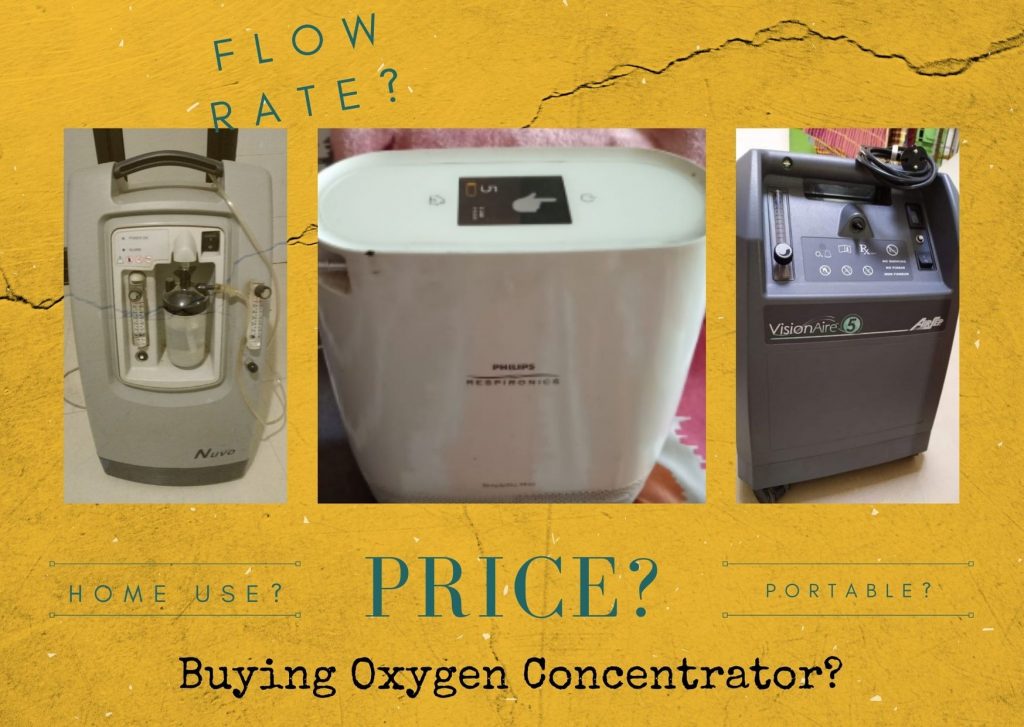
Oxygen concentrators, CPAP, BiPAP are medical equipment commonly used today at home for treating patients suffering from respiratory issues like Asthma, COPD, Sleep Apnea etc. These devices are also commonly rented for temporary use. If one needs to buy an oxygen concentrator, there are many options available in the market. How to decide which one to buy? Read on to know more about various factors to consider when buying an oxygen concentrator.
-
What is the Flow requirement?
The most important parameter in deciding to buy Oxygen Concentrator (OC) is the “flow requirements”. Oxygen concentrator use must be based on a doctor prescription and the doctor would definitely prescribe the flow requirement in Litres Per Minute (LPM) based on the patient condition and how much supplementary oxygen therapy is required for the patient.
They may even specifically recommend getting either a 5LPM or 10 LPM machine. Oxygen Concentrators with 5 Litres/minute capacities are the most commonly prescribed and available in the market.
Follow your doctor’s prescription to decide flow rate capacity – when buying oxygen concentrator.
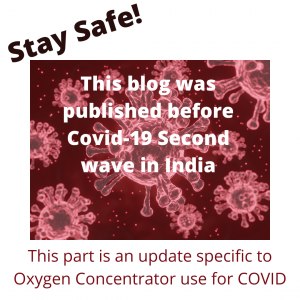
————————————————————————————————————————————————
Due to shortage of hospital beds and oxygen supply in hospitals, many are buying oxygen concentrators at home. The most common question being asked is – what capacity is required 5 LPM or 10LPM?
There are two scenarios people are preparing for:
- Pre-hospitalization scenario – if there is a delay in bed availability and a covid patient is already breatheless. A Covid positive patient whose oxygen saturation is dropping rapidly below normal needs high flow (10-15LPM or more) oxygen therapy at high purity levels (90-93%+). A 5LPM oxygen concentrator may not be adequate for this purpose for too long. Hence at least a 10LPM oxygen concentrator which maintain high oxygen purity is required.
- Post-hospitalization scenario – Many hospitals are discharging patient who have recovered from COVID and recommending continued supplemental oxygen therapy at home. Again, one needs to follow doctor’s recommendations based on patient condition. However, during the recovery phase it is most likely that the flow rate requirement is low at 2-5 LPM.
Whatever Flow capacity you use, please ensure the machine maintains high oxygen concentration levels.
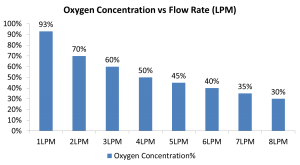
There are some machines where the oxygen concentration may fall to even 30% at high flow rates like 8 or 10 LPM. These are fine for usage in other cases such as COPD. But these are not suitable for COVID use.
The oxygen concentration should preferably be maintained at 93+/-3%. i.e 90% plus. The graph may look somewhat like this.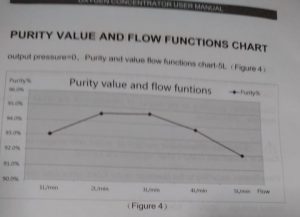
————————————————————————————————————————————————–
-
Portable or Home Use oxygen concentrator?
A portable oxygen concentrator is roughly 3-4 times costlier than a home oxygen concentrator. Therefore one needs to carefully consider if a portable oxygen concentrator is really going to be used or not. Those who need regular oxygen therapy would have one home oxygen concentrator. However those who lead an active life, travel frequently within or outside their base location, additionally invest in a portable oxygen concentrator so as to continue their work or way-of-life uninterrupted.
One must keep in mind that the portable Oxygen Concentrators come with lower LPM capacity (e.g. 2-3 LPM).
While Home-use oxygen concentrators are all continuous flow machines, portable ones come in two options – pulse flow and/or continuous flow modes. Pulse Flow portable Oxygen Concentrators issue oxygen in puffs (pulse) when the patient inhales only. Continuous Flow machines issue oxygen continuously irrespective of whether patient is breathing in or out. Portable oxygen concentrators are generally smaller and lighter than home-use ones so they are easier to carry around.
Accessories may include carrying case, mobile cart, rechargeable battery, DC (for Car power supply) and AC power cords, accessory case etc. Check your travel requirements vs adequacy of flow, battery backs-ups, charging facility etc.
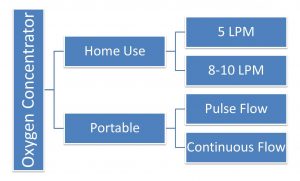
-
Short-term or medium / long-term use?
The most sincere piece of advice we would like to offer is
“Do NOT rush into buying a brand new oxygen concentrator. Consider the potential duration of usage before deciding to buy”
Why?
We come across plenty of home users who want to sell their sparingly used oxygen concentrators. They would have used it just for 6 months, 1-2 months or even sometimes just 10-15 days. Believe us when we say – no matter how little the equipment has been used, the price it can fetch in the pre-owned equipment market crashes drastically to half (at best), 1/3rd or even lesser depending on how much it has been used.
Let’s examine the financials.
Buy or Rent Oxygen Concentrator?
One can get an oxygen concentrator on rent for approximately Rs 5000 per month in India. On the other hand, you can buy a new oxygen concentrator for about Rs 50-60000. Therefore if you are going to be using the equipment for less than 1-year it makes better financial sense to rent the machine. Even if you consider resale value, it may make better sense to rent rather than purchase if the usage is less than 6-months. Read more on factors to consider buy vs rent decision and the financial factors to consider.
https://www.primedeq.com/blog/should-i-buy-or-rent-oxygen-concentrator-for-use-at-home/
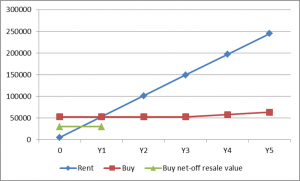
-
Top Oxygen Concentrator Brands in India
- Philips Respironics, AirSep and Nidek Medical are the most sold machines in India market.
- Invacare, DeVilbiss, Home Medix, Evox etc. are other popular brands and fast catching up.
- Inogen is popular in the portable oxygen concentrator segment along with Philips SimplyGo.
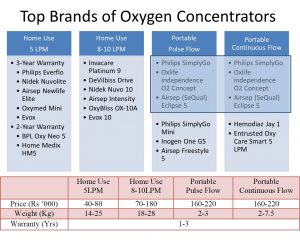
-
Oxygen Concentrator Price in India
There are many online as well as offline sellers of respiratory care products and often deep discounts are possible. It is important to have a rough idea of price of each type of oxygen concentrator before you go out to purchase.
- 5 LPM Home Oxygen Concentrators usually range between ₹ 40,000 – 75,000. Some local and Chinese imports may cost lesser.
- High flow (8-10 LPM) Oxygen Concentrator price range varies from ₹ 70,000 to ₹ 1,20,000.
- Pulse Flow Portable Oxygen Concentrators are more expensive than stationary ones and they start from ₹ 1.6 lacs to ₹ 2.5 lacs.
- Continuous Flow Portable Oxygen Concentrators are heavier than pulse flow portable machines and slightly more expensive with price ranging from ₹ 2.25 lacs to ₹ 3.5 lacs.
Getting proper after sales service support is critical when buying a new machine. Ensure to get the warranty card or stamp and terms & conditions printed on the invoice. Ask for demo and check for all promised accessories.
PrimedeQ is an eMarketplace for medical equipment. We offer all types of medical equipment both new and used/ second-hand for sale. Check new or used respiratory products available with us. We also assist in repair and maintenance services at www.Primedeq.com. Contact us at +918971223957 or +917019759765 for all your medical equipment related needs.
.
https://in.linkedin.com/in/shanthi-mathur-ab07838
